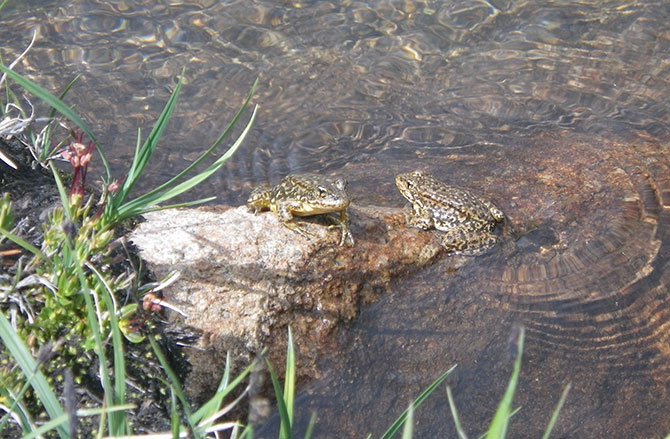|
You are viewing ARCHIVED content published online before January 20, 2025.
Please note that this content is NOT UPDATED, and links may not work. For current information,
visit https://www.nps.gov/aboutus/news/index.htm.

NPS Photo
Yosemite National Park is restoring the federally endangered Sierra Nevada yellow-legged frog to alpine lakes within the park. The yellow-legged frog was once the most common frog in mountain lakes throughout the Sierra Nevada, but introduced predators and diseases caused their population to decline by over 95 percent. Park experts are encouraged by the results of initial restoration efforts and estimate that the population in Yosemite could become self-sustaining within the next ten years.
Restoring the frogs to their native habitat is a two stage process. Initially, park scientists identify and restore suitable lakes usually where frogs are absent, where they can then reintroduce about 20 adult frogs per site. The adults are collected from well-established populations elsewhere in the park. They are given a micro-chip similar to those used for pets before being released into their new home lakes. Seven lakes are ready to support frog populations. Frogs have already been successfully reintroduced at two of those sites. Park scientists plan to reintroduce frogs at two more of these seven sites in the coming years and expect the frogs to recolonize the remaining three to lakes on their own from nearby sources.
Like the better-known California red-legged frog, made famous by Mark Twain in his story the "Celebrated Jumping Frog of Calavaras County," Park Biologist Rob Grasso said "the Sierra Nevada yellow-legged frog was once so numerous it was difficult to walk around a lake without stepping on them. Today we know these frogs are a key part of healthy mountain lake ecosystems and we are confident that we can restore these frogs in Yosemite so that future generations can experience seeing them in high abundance once again."
The Yosemite Conservancy, the park's philanthropic partner, is a major supporter of this project.
|
Last updated: July 9, 2015
